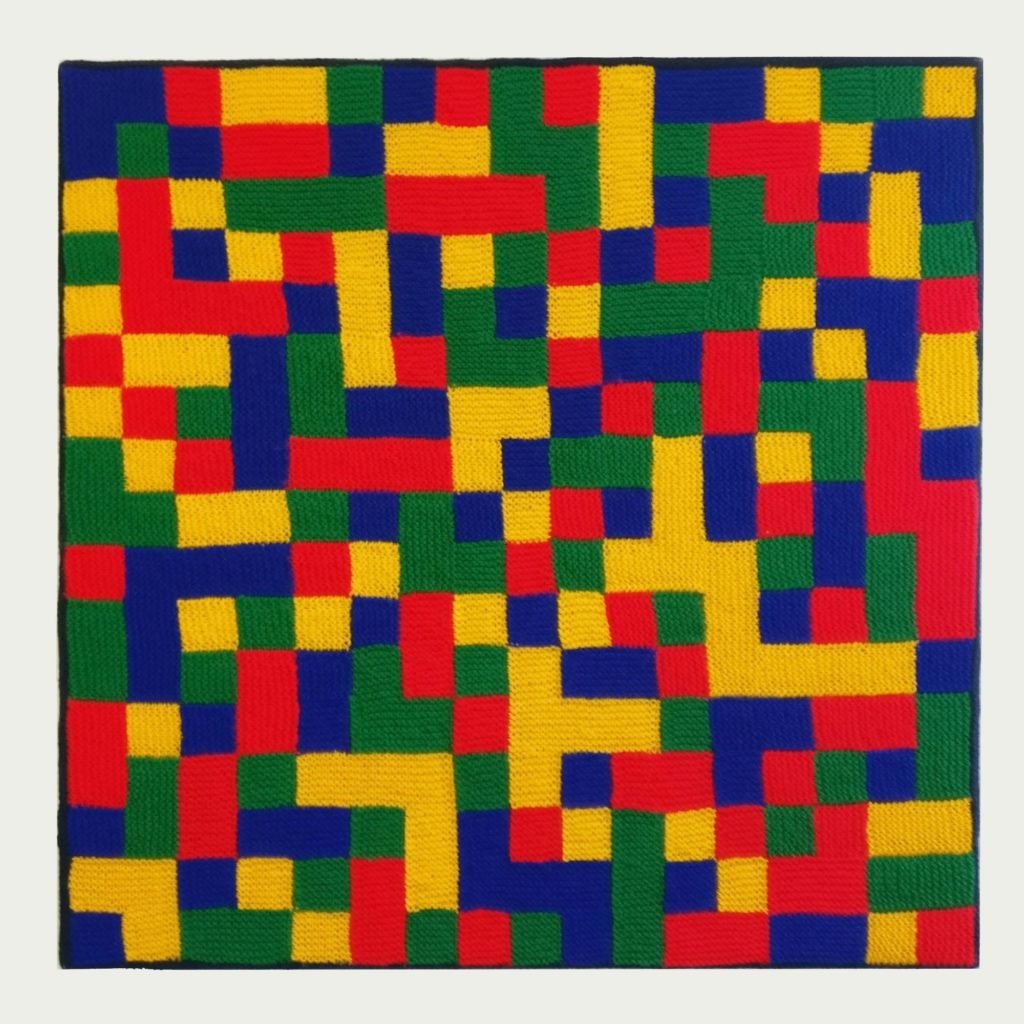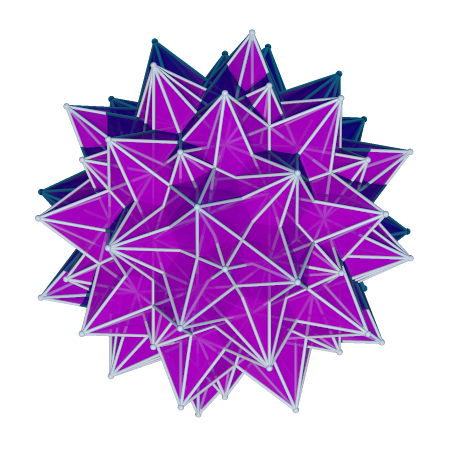This month’s Carnival of Mathematics is hosted here, at The Aperiodical. The Carnival rounds up maths blog posts from all over the internet, and this month we’ve reached the heady heights of number 174.
In keeping with Carnival tradition, I’m compelled to inform you that, while it’s generally not particularly interesting:
- 174 is an abundant number, meaning if you write down all its proper divisors and add them together, the total is more than 174. It’s quite factor-y.
- It’s also an odious number, which means it has an odd number of ones in its binary representation (as opposed to being an evil number, with an even number of ones).
- It is also a 59-gonal number – which means that 174 things can be arranged into a 59-sided shape. Play more with polygonal numbers here.
Now, on to the Carnival!
If you enjoyed our Big Internet Math-Off here this summer, you might find it nice to know that one of the Math-Off entries has inspired a knitted piece from Pat & Steve over at Woolly Thoughts.

Regular Carnival host Kartik has noticed an interesting pattern in the way the trees look while driving down the highway, and discovered an interesting number-theoretic reason behind it.
Over on Medium, Digya Acharya has put together a nice introduction to one of my favourite topics, information theory, and an intuitive introduction to linear regression.
Meanwhile, at the European Mathematical Society’s blog Mathematics in Europe, Gianluigi Filippelli shares the curiosity that is lunar arithmetic.
Ari Rubinsztejn has shared an in-depth response (including numerical simulations) to a maths problem posed on Twitter by YouTuber Primer, which involves throwing coloured balls into bins.

While many of our Carnival entries are simple blog posts, some go the extra mile. Nan Ma has built a website to visualise regular star polytopes in 2D, 3D, and 4D, and if you’re a fan of 3D shapes, there’s a wealth of images, animations and explanations to explore.

While we’re on Serious Business, Math Vault have shared their Definitive, Non-Technical Introduction to LaTeX, Professional Typesetting and Scientific Publishing – it explains what different typesetting options you have and why LaTeX is clearly the best one.
And finally, Carnival regular hosts Ganit Charcha have started a mathematics magazine – and they’re looking for reader submissions. It’s aimed at K-12 students (ages around 5-18) and submissions from students are welcome – so if you know any students who might like somewhere to write for, point them that way!
The next Carnival of Maths will be #175, and when it lands we’ll post a link here. If you’d like to host a future Carnival, you’d be very welcome – visit our Carnival of Maths page for more info.